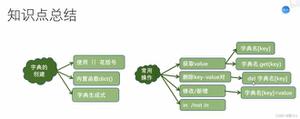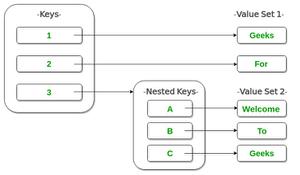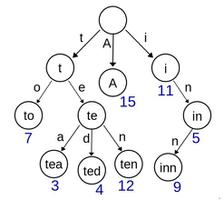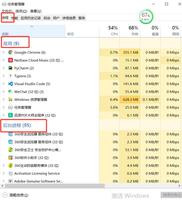在Python字典中访问键值
在使用Python数据结构分析数据时,我们最终会遇到访问字典中的键和值的需求。本文中有多种方法可以实现,我们将介绍其中的一些方法。
带for循环
使用for循环,我们可以在下面的程序中尽快访问字典中每个索引位置的键和值。
示例
dictA = {1:'Mon',2:'Tue',3:'Wed',4:'Thu',5:'Fri'}#Given dictionary
print("Given Dictionary: ",dictA)
# Print all keys and values
print("Keys and Values: ")
for i in dictA :
print(i, dictA[i])
输出结果
运行上面的代码给我们以下结果-
Given Dictionary: {1: 'Mon', 2: 'Tue', 3: 'Wed', 4: 'Thu', 5: 'Fri'}Keys and Values:
1 Mon
2 Tue
3 Wed
4 Thu
5 Fri
具有列表理解
在这种方法中,我们认为键类似于列表中的索引。因此,在print语句中,我们将键和值与for循环一起表示为一对。
示例
dictA = {1:'Mon',2:'Tue',3:'Wed',4:'Thu',5:'Fri'}#Given dictionary
print("Given Dictionary: ",dictA)
# Print all keys and values
print("Keys and Values: ")
print([(k, dictA[k]) for k in dictA])
输出结果
运行上面的代码给我们以下结果-
Given Dictionary: {1: 'Mon', 2: 'Tue', 3: 'Wed', 4: 'Thu', 5: 'Fri'}Keys and Values:
[(1, 'Mon'), (2, 'Tue'), (3, 'Wed'), (4, 'Thu'), (5, 'Fri')]
与dict.items
字典类有一个名为项的方法。我们可以访问items方法并对其进行迭代以获取每对键和值。
示例
dictA = {1:'Mon',2:'Tue',3:'Wed',4:'Thu',5:'Fri'}#Given dictionary
print("Given Dictionary: ",dictA)
# Print all keys and values
print("Keys and Values: ")
for key, value in dictA.items():
print (key, value)
输出结果
运行上面的代码给我们以下结果-
Given Dictionary: {1: 'Mon', 2: 'Tue', 3: 'Wed', 4: 'Thu', 5: 'Fri'}Keys and Values:
1 Mon
2 Tue
3 Wed
4 Thu
5 Fri
以上是 在Python字典中访问键值 的全部内容, 来源链接: utcz.com/z/340828.html






